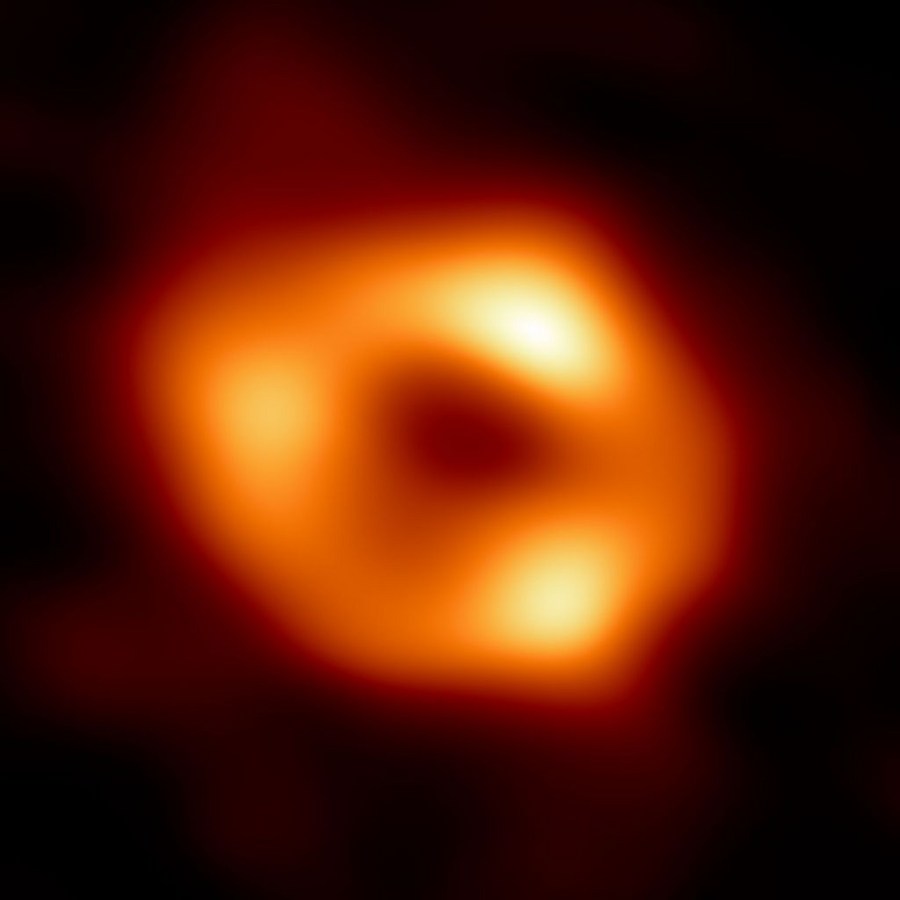Astronomers unveil first image of black hole at center of galaxy

Photo posted on U.S. National Science Foundation Twitter account on May 12, 2022 shows the first image of the supermassive black hole, known as Sagittarius A*, at the center of the Milky Way galaxy. (Photo credit: the U.S. National Science Foundation)
The black hole is about 27,000 light-years away from Earth, and 4 million times more massive than the Sun, according to the astronomers.
LOS ANGELES, May 12 (Xinhua) -- Astronomers revealed the first image of the supermassive black hole at the center of the Milky Way galaxy on Thursday.
The image was produced by a global research team called the Event Horizon Telescope (EHT), using observations from a worldwide network of radio telescopes.
It is the first direct visual evidence confirming the presence of the black hole, known as Sagittarius A*, at the center of the Milky Way, said the U.S. National Science Foundation (NSF) in a release.
The black hole is about 27,000 light-years away from Earth, and 4 million times more massive than the Sun, according to the astronomers.
The effort to unveil the first picture of the black hole was made through the ingenuity of more than 300 researchers from 80 institutes around the world that together make up the EHT Collaboration, said the NSF.
"Although we cannot see the black hole itself, because it is completely dark, glowing gas around it reveals a telltale signature: a dark central region, called a 'shadow', surrounded by a bright ring-like structure," said the NSF.
The new view captures light bent by the powerful gravity of the black hole.
"We were stunned by how well the size of the ring agreed with predictions from Einstein's Theory of General Relativity," said EHT Project Scientist Geoffrey Bower.
"These unprecedented observations have greatly improved our understanding of what happens at the very center of our galaxy and offer new insights on how these giant black holes interact with their surroundings," Bower said.
The breakthrough follows the EHT Collaboration's 2019 release of the first image of a black hole, called M87*, at the center of the more distant Messier 87 galaxy.
"Now we can study the differences between these two supermassive black holes to gain valuable new clues about how this important process works," said EHT scientist Keiichi Asada.
"We have images for two black holes - one at the large end and one at the small end of supermassive black holes in the Universe - so we can go a lot further in testing how gravity behaves in these extreme environments than ever before," Asada said.
Scientists have begun to use the new data to test theories and models of how gas behaves around supermassive black holes. This process is not yet fully understood but is thought to play a key role in shaping the formation and evolution of galaxies, according to the NSF.
Photos
Related Stories
- Astronomers discover one of the brightest galaxies known
- Scientists find one galaxy made of 99.99 pct dark matter
- Most detailed 3D map of the universe yet could help us understand dark energy
- Researchers discover oldest and most distant object in the universe
- Stunning Hubble image reveals the biggest and most luminous star cluster in the Milky Way
Copyright © 2022 People's Daily Online. All Rights Reserved.










